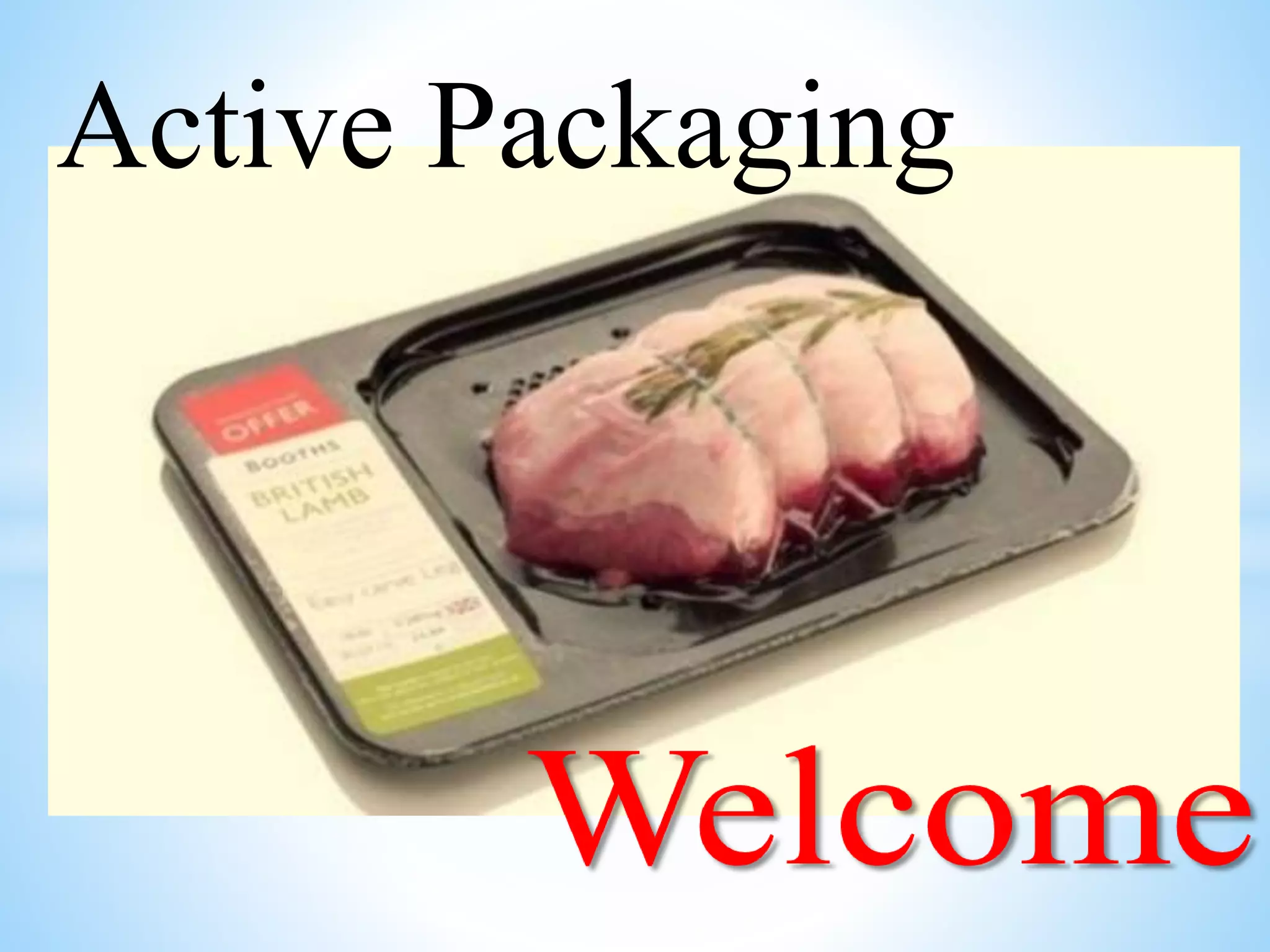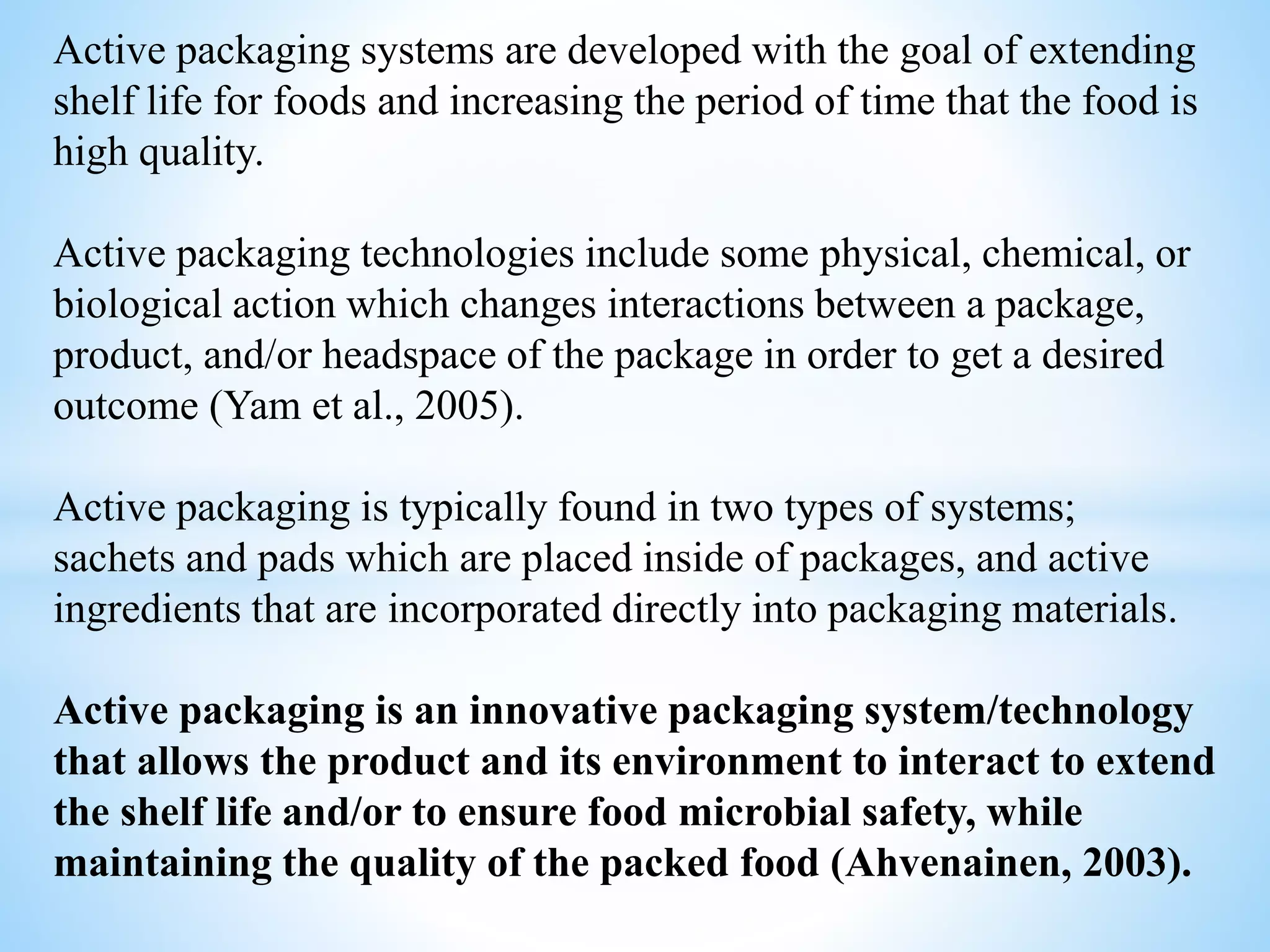Active packaging technologies can help extend the shelf life of foods and maintain quality. There are various types of active packaging systems that interact with the packaged product including oxygen scavengers, CO2 emitters, moisture absorbers, odor/flavor absorbers, antimicrobials, and antioxidant releasers. These systems are used for applications in meat, seafood, bakery goods and other products. Future trends in active packaging may include self-heating and self-cooling systems as well as technologies that can heat or chill food on demand.























